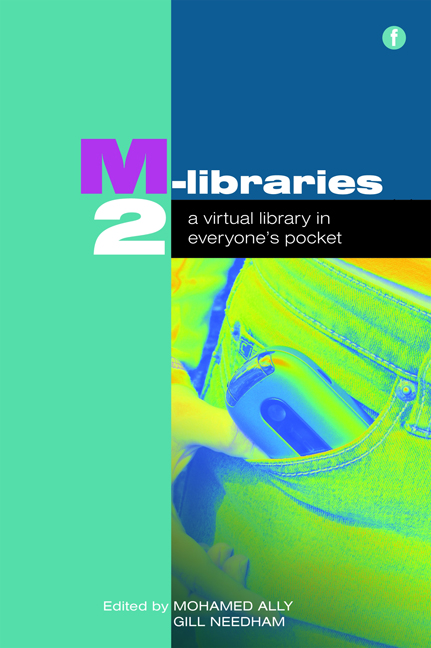Book contents
- Frontmatter
- Contents
- Acknowledgements
- Contributors
- Foreword
- Introduction
- PART 1 M-LIBRARIES: DEVELOPMENTS AROUND THE WORLD
- PART 2 TECHNOLOGY IN M-LIBRARIES
- PART 3 APPLICATION OF M-LIBRARIES
- PART 4 M-LIBRARIES AND LEARNING
- PART 5 BUILDING THE EVIDENCE BASE FOR M-LIBRARIES
- 24 Enhancing library access through the use of mobile technology: case study of information services provided by six mobile companies in Bangladesh
- 25 M-libraries: information use on the move
- 26 UCLA and Yale Science Libraries data on cyberlearning and reference services via mobile devices
- 27 Say what? An SMS transcript analysis at New York University
- Conclusion
- Index
26 - UCLA and Yale Science Libraries data on cyberlearning and reference services via mobile devices
from PART 5 - BUILDING THE EVIDENCE BASE FOR M-LIBRARIES
Published online by Cambridge University Press: 08 June 2018
- Frontmatter
- Contents
- Acknowledgements
- Contributors
- Foreword
- Introduction
- PART 1 M-LIBRARIES: DEVELOPMENTS AROUND THE WORLD
- PART 2 TECHNOLOGY IN M-LIBRARIES
- PART 3 APPLICATION OF M-LIBRARIES
- PART 4 M-LIBRARIES AND LEARNING
- PART 5 BUILDING THE EVIDENCE BASE FOR M-LIBRARIES
- 24 Enhancing library access through the use of mobile technology: case study of information services provided by six mobile companies in Bangladesh
- 25 M-libraries: information use on the move
- 26 UCLA and Yale Science Libraries data on cyberlearning and reference services via mobile devices
- 27 Say what? An SMS transcript analysis at New York University
- Conclusion
- Index
Summary
The role of SMS in information services
Mobile phones are quickly emerging as a primary information interface for many people. Mobile devices are becoming as important as desktops, and even as important as laptops, as tools for engaging with information. Text messaging (SMS) is a centrepiece of mobile communication worldwide because it is universal across phone types, allowing it to bridge the smart phone/basic mobile phone divide.
SMS (Short Message Service) is used for so much more than com - munication: it's now a major medium for seeking, applying and transferring content. We seek information from our friends and from the crowd with online social networks like Twitter and Facebook. We also use SMS for knowledge management activities such as tracking and sharing information and resources. SMS is thus a central part of how we engage with information, and libraries can stay relevant and maintain their role as information centres in the evolving mobile environment by offering services to their patrons using text messaging reference.
Technology options for SMS reference
Choosing the most appropriate technology for SMS reference in your library is a major concern affecting all areas of the service, especially management and staffing, with implications for the service's long-term success. The major considerations in evaluating technologies and products are: cost, ability to meet patrons’ expectations, sustainable staffing workflows, interoperability and flexibility. Beware of tools that require additional steps for the patron or the librarian. The best technologies allow patrons to send messages directly to a normal phone number with no additional steps and allow librarians to respond directly, in one step.
The major technology options for SMS reference are free SMS to instant message (IM) mash-ups, basic mobile phones or smart phones, webbased tools for receiving text messages in a web platform, SMS/e-mail tools that convert text messages to e-mail, and workarounds such as Twitter or Google Voice. Each technology has its strengths and weaknesses. The SMS/IM (instant messaging) options, like the web-based options, require patrons to enter a screen name in the message in addition to the shortcode address. Both the SMS/IM and the SMS/e-mail options have the benefit of incorporating the service into existing virtual reference programs, but separate the librarian from the technology used by patrons.
- Type
- Chapter
- Information
- M-Libraries 2A virtual library in everyone's pocket, pp. 245 - 254Publisher: FacetPrint publication year: 2010
- 2
- Cited by



